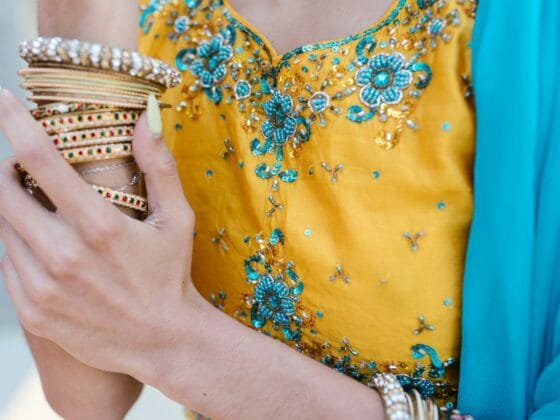A needle is used in sewing machines to pierce the fabric and attach one piece of fabric to another. The needle size is indicated by two numbers, where the first number indicates the thickness of the fabric, and the second number indicates how large an area can be sewn with one typical sewing machine stitch. For example, needles in the United States are commonly sized between 8 and 18; in this case, “18” would indicate that only a single typical sewing machine stitch could be made with that needle per inch.
As fabric becomes more dense or tight-knit (for example, when attaching leather), larger-sized needles may need to be used. When working with fabrics, it can also be helpful to use a ballpoint needle with a blunted tip that helps it glide between the fibers of tightly-knit fabrics rather than piercing them.
Table of Contents
What is the best size sewing machine needle for cotton fabric?
Because it’s a very light fabric with a loose weaving pattern, sewing machine needles must be large enough to accommodate this fabric without tearing or running into holes. The best choice for lighter cotton is a sharp number 14 needle (90/14). If cotton is unlined or used in a lightweight, unlined garment, such as a cotton blouse, it may be best to use a cotton-specific needle in 80/12 and then finish by hand with cotton thread to ensure that the stitches don’t pull out. For cotton lining, you’ll need heavy all-purpose cotton thread.
Different types of cotton fabric and the needle size required?
There are different types of cotton fabrics available. The most common type is 100% cotton, which comes in many varieties, including percale, poplin, broadcloth, corduroy, and oxford cloth. Cotton also comes blended with other fibers to improve performance or cost savings.
Percale fabric
Percale fabric is a woven plain-weave cotton fabric, which means the warp and weft threads go over one thread and under one thread. Percale is strong, breathable, and resists wrinkling. It’s commonly used in bedding, such as sheets, duvet covers, pillowcases, comforters, blankets, and mattress pads. The best needle size for percale fabric would be 80/11.
Poplin fabric
Poplin fabric is a strong, smooth, woven fabric. It gets its name from the poplin weave, consisting of two threads over and one under. Poplin usually has a finer yarn than broadcloth, but it’s just as durable. The best needle size for percale fabric would be 90/14.
Broadcloth fabric
Broadcloth fabric is a lightweight, plain woven fabric with equal warp and weft threads. The name comes from the width of the cloth which is typically wider than other fabrics. This variety is famous for dress shirts, school uniforms, quilts, and duvets. The best needle size for percale fabric would be 80/11.
Corduroy fabric
Corduroy fabric is a popular dress and home decor fabric. It typically has a smooth top with vertical ribs but can also be made with a fuzzy or textured surface. Corduroy is commonly used in casual clothing such as skirts, pants, shirts, and jackets. The best needle size for percale fabric would be 80/11.
Oxford cloth
Oxford cloth is a densely woven fabric with a fine weave. There are warp and weft threads that go over two threads, then under one thread. It’s perfect for use in formal apparel such as suits. The best needle size for percale fabric would be 90/14.
What is a 90 14 needle used for?
90/14 needles are used for cotton fabric but can also be used with other lightweight fabrics. The number refers to the width of the needle in millimeters. A 90/14 needle has a diameter of .090″ or 2.3mm, which is small enough to prevent any possible damage to cotton fabrics but not so large as to create lint problems on lightweight fabrics–which can happen if you use an 80/12 needle.
What is an 80 11 needle used for?
80/11 needles are best suited for delicate fabrics like silk, satin, lightweight woolen, and cotton. They are less likely to shred these materials than larger needles. But 80/11s should never be used on heavy fabrics since the smaller needle will not hold up against the thicker threads.
Thanks for reading our article on the best sewing machine, “needle sizes” for Cotton. As you can see, not all cotton fabrics are equal. The good news is that with an 80/11 & a 90/14, you can pretty much cover all of the cotton fabrics out there. I also recommend this thorough article on sewing machine needle size selection.











